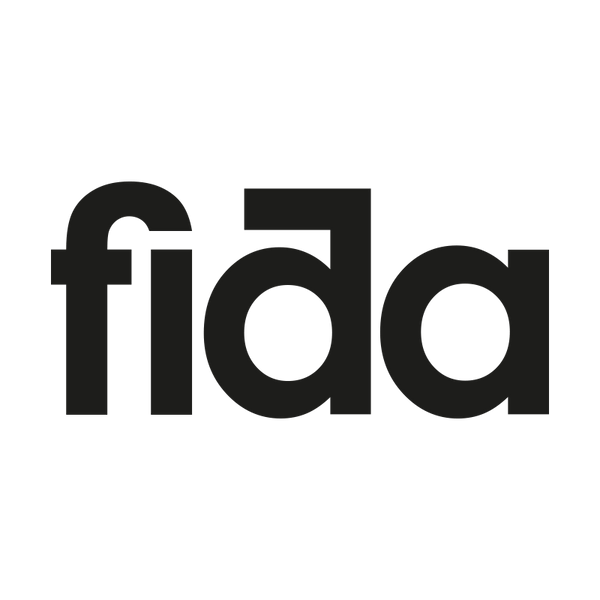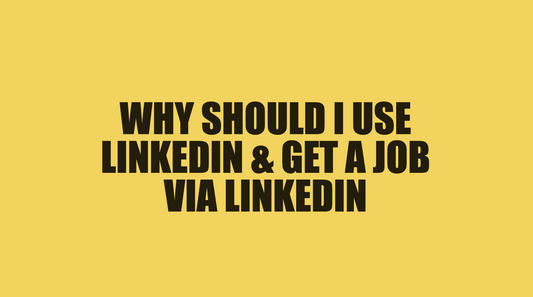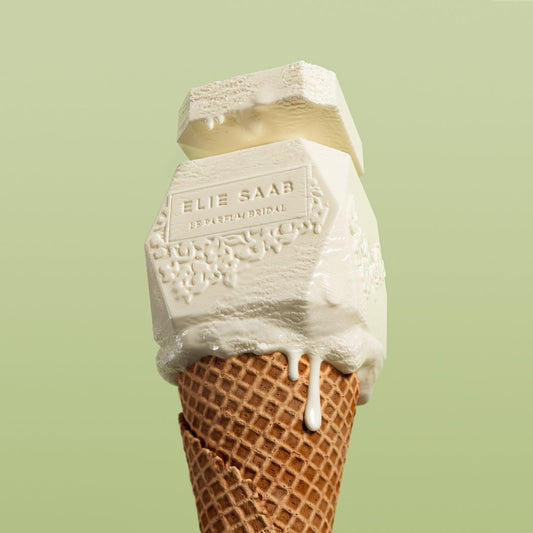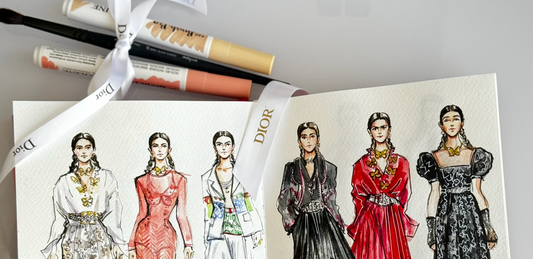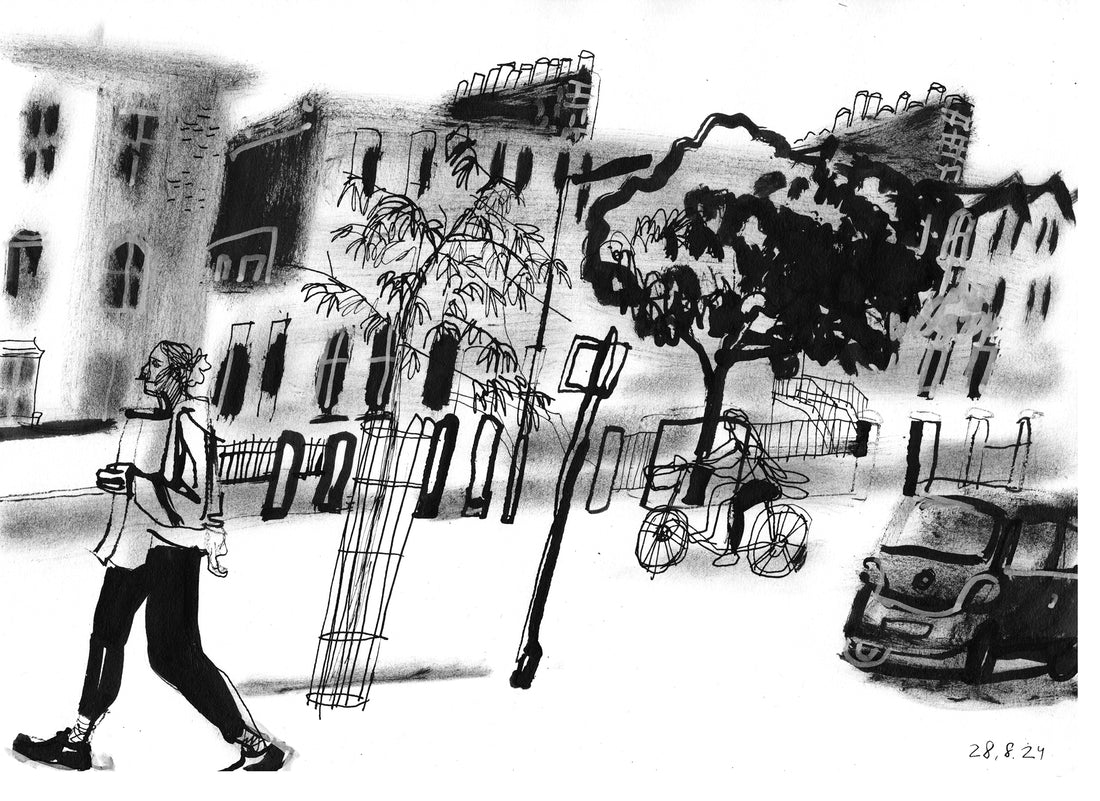
The Acceptance of Imperfection with Ksenia Topaz
Share
In this candid interview, we dive into the creative world of Ksenia Topaz, an artist whose work balances structured technique with spontaneous expression. Working in black and white and using unconventional tools found in everyday life, she has crafted a style that is both deeply personal and universally evocative - all while navigating the challenges of balancing creativity with the demands of daily life.

How would you describe your illustration style, and what influences have shaped it over time?
My style has been shaped by numerous influences, both external and internal, making the list quite extensive. If I were to condense it to three key influences:
- I have a strong affinity for “retro” aesthetics, which is reflected in my preference for a black and white palette.
- One of the artists who captivated me as a child was the Japanese master Katsushika Hokusai; I can see his influence in many of the textures present in my art.
- In my effort to break away from the urge to create perfectly ordered and clean drawings, I developed a personal technique that involves using various tools within a single piece. This process requires a specific mindset and a limited timeframe for each drawing. I enjoy the quick, immersive experience of creating art, especially since I always have dishes or family waiting for me outside the studio, prompting me to work efficiently.

What mediums or tools do you prefer working with, and how do they impact the look and feel of your illustration?
I work on smooth white Bristol paper (240 gsm) in A4 size or larger, always using black ink (undiluted). As for my tools, I use whatever I can find around me - whether it’s items from the garden, any sticks and leaves, cheap art supplies for kids, or old, worn-out brushes. I don’t use anything fine or expensive! This approach gives my illustrations a more vibrant, slightly gritty, and unexpected quality. It allows me to feel freer during the creative process and keeps me engaged and entertained; I worry about becoming boring or too automatic in my drawing - something I definitely want to avoid!
What’s your process for starting a new illustration, from initial idea to final piece?
Over the years, I’ve learned that if I dwell on something for too long, I end up stifling it. So, I try to seize the first idea that comes to mind and run with it. In other words, I need to trust myself. However, if you ask when those initial ideas arise, I’d say that sometimes it takes a walk or a shower - places where inspiration often strikes. Once I have an idea, I try to capture it on paper quickly, usually within half an hour to an hour and a half. I’ve found that this approach is much more effective for me than getting caught up in a lengthy process filled with overthinking and revisions.

Are there any particular illustrators or art movements that have had a lasting impact on your work?
I believe everything happening in the art world today influences me, particularly elements that are “imperfect,” “accidental,” “unfinished,” or “childlike.” This acceptance of imperfection serves as a guiding principle, allowing me to embrace the same qualities in my work. Having grown up immersed in classical art and studying at the Moscow Academy of Arts (Strogonoff Academy) - where my father taught academic drawing - I’ve travelled a long journey to reach my current perspective. While I appreciate the foundation of my education, I don’t see its influence reflected in my art today, nor do I desire that connection. I do incorporate some of that knowledge into my teaching, but I strive to keep it separate from my personal artistic expression.
How do you approach creating characters or scenes that convey emotion and tell a story through your illustrations?
First of all, I’m checking my personal emotions about the subject. Then, I’m thinking about the technique together with the vibe I want to express; for example, if it is something melancholic and sad, but not dramatic, I’ll choose the dry brushes and fine lines with a pen, greyish tones. The images come into my head at the same time, together with the environment, or maybe I have to search a little on Pinterest or Instagram to complete the whole picture. Sometimes I’m checking the artists I cherish who give me the sense of the vibe I want to create.

How does your personal relationship with nature, cityscapes, or the environment reflect in your work?
I seek inspiration everywhere. Any cityscape, natural setting, shadow, or object can spark a drawing idea. When it comes to urban scenes, I often find inspiration in the rhythm of the structures; nature, on the other hand, offers a different, more complex sense of rhythm. I just need to notice these elements and trust myself - recognizing and gathering the signals around me.
What is your favourite subject or theme to draw, and what is it about that topic that keeps drawing you back to it?
Nature is certainly within my comfort zone - perhaps I could call it my favourite? I'm hesitant to label anything as such, though, because I dislike staying in my comfort zone for too long; it quickly becomes boring. So, I prefer not to define a single “favourite thing to draw.”

Can you share a project that pushed your creative boundaries and helped you grow as an illustrator?
After participating in Inktober 2020, I realised that black and white techniques would become my primary focus. I had explored various styles before that, but since then, I’ve been dedicated to my personal project, which consists of my ink drawings featured on my Instagram profile. Occasionally, I also take part in art challenges on IG.
What’s the most unconventional source of inspiration you’ve drawn from - something most wouldn’t expect to inform your work?
My husband is quite the opposite of an artist; he belongs to the “real” and “normal” world (Someone has to pay the bills in this family). Our debates often centre around questions like, “Why are you wasting your time on these drawings? What purpose do they serve?”. These conversations challenge me to clarify for myself what I’m doing and why it matters.

Do any specific songs or musicians set the tone for your work or influence your process while you create?
I never listen to music while I’m drawing. For me, music can’t be background noise; I have to choose between the two. Both are very intense experiences for me and can disrupt each other. My mind is fully engaged when I’m creating. I can listen to music while driving or doing simpler tasks, but not during the creative process.

See more from Ksenia Topaz:
Shop for prints and original art: http://etsy.me/2pq0J2y
Instagram: https://www.

